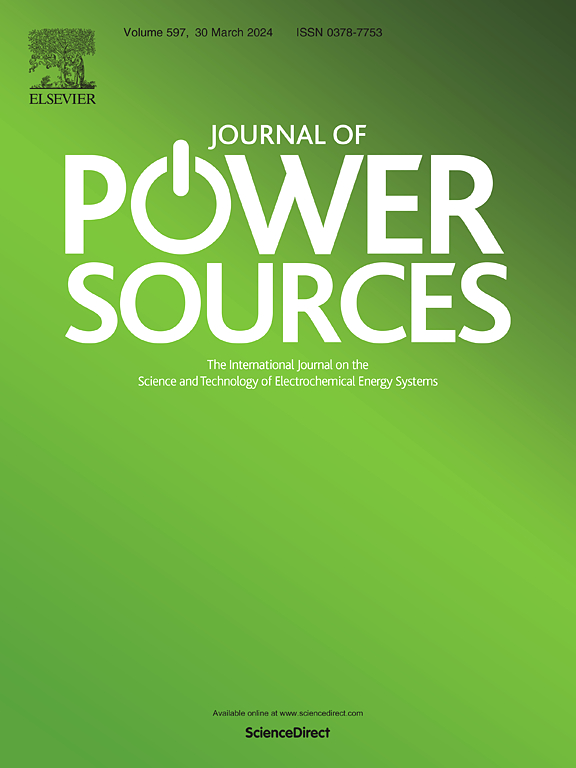The utilization of high saline sodium chloride containing waters in solid oxide electrolysers
IF 7.9
2区 工程技术
Q1 CHEMISTRY, PHYSICAL
引用次数: 0
Abstract
State-of-the-art electrolyser systems are based on the utilization of highly pure freshwater. This could lead to an increase in freshwater demand and a worsening of freshwater water scarcity. One solution is the direct use of saline waters such as seawater or wastewaters from industry. In this work, the impact of sodium chloride contamination in waters on high temperature solid oxide electrolysis cells is investigated. Thus, the utilization of high saline wastewater from industry and an accelerated stress test for the use of seawater in SOECs is evaluated. The initial performance and stability are compared with results gathered by utilizing high-purity freshwater for steam generation. An increased degradation rate was observed for the sodium chloride solution after 400 h of operation. The increased degradation is mainly caused by an accelerated increase in ohmic and polarisation resistance. More specifically, the charge transfer process in the Ni-YSZ fuel electrode was found to contribute significantly to the increased degradation. Post-test characterization using XPS and SEM-EDX showed sodium particle deposition on the fuel electrode surface contact layer confirming the transport of salt to the cell. The cross-section analysis by SEM showed an accelerated Ni agglomeration in the Ni-YSZ fuel electrode compared to pure water operation.
含高盐氯化钠水在固体氧化物电解槽中的应用
最先进的电解槽系统是基于对高纯度淡水的利用。这可能导致淡水需求的增加和淡水短缺的恶化。一种解决方案是直接使用盐水,如海水或工业废水。本文研究了水中氯化钠污染对高温固体氧化物电解池的影响。因此,对工业高盐废水的利用和国有企业使用海水的加速压力试验进行了评价。将初始性能和稳定性与利用高纯度淡水产生蒸汽的结果进行了比较。运行400 h后,氯化钠溶液的降解率有所提高。增加的退化主要是由于欧姆和极化电阻的加速增加。更具体地说,Ni-YSZ燃料电极中的电荷转移过程对降解的增加有显著贡献。测试后使用XPS和SEM-EDX进行表征显示,钠颗粒沉积在燃料电极表面接触层上,证实了盐向电池的运输。扫描电镜(SEM)分析表明,与纯水操作相比,Ni- ysz燃料电极中Ni的团聚速度加快。
本文章由计算机程序翻译,如有差异,请以英文原文为准。
求助全文
约1分钟内获得全文
求助全文
来源期刊

Journal of Power Sources
工程技术-电化学
CiteScore
16.40
自引率
6.50%
发文量
1249
审稿时长
36 days
期刊介绍:
The Journal of Power Sources is a publication catering to researchers and technologists interested in various aspects of the science, technology, and applications of electrochemical power sources. It covers original research and reviews on primary and secondary batteries, fuel cells, supercapacitors, and photo-electrochemical cells.
Topics considered include the research, development and applications of nanomaterials and novel componentry for these devices. Examples of applications of these electrochemical power sources include:
• Portable electronics
• Electric and Hybrid Electric Vehicles
• Uninterruptible Power Supply (UPS) systems
• Storage of renewable energy
• Satellites and deep space probes
• Boats and ships, drones and aircrafts
• Wearable energy storage systems
 求助内容:
求助内容: 应助结果提醒方式:
应助结果提醒方式:


